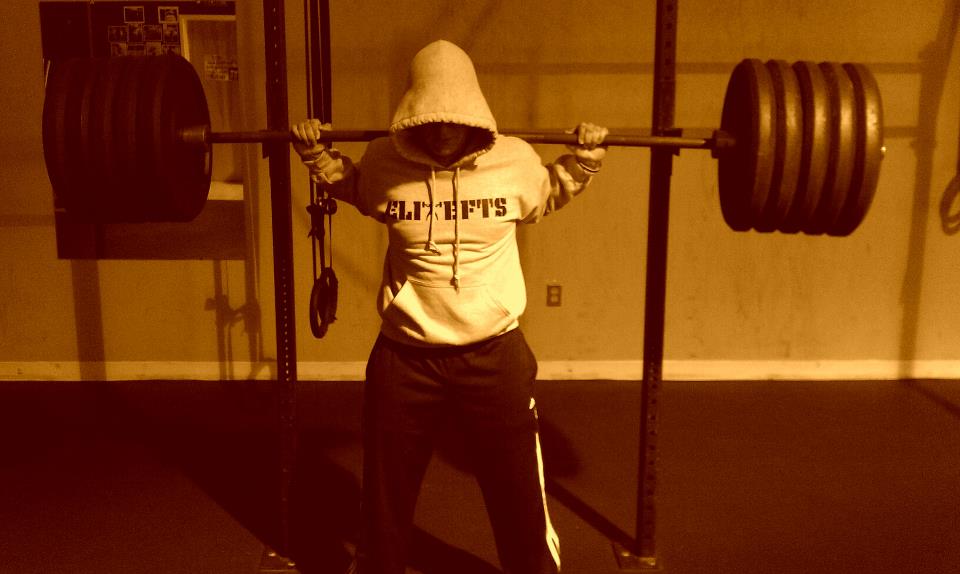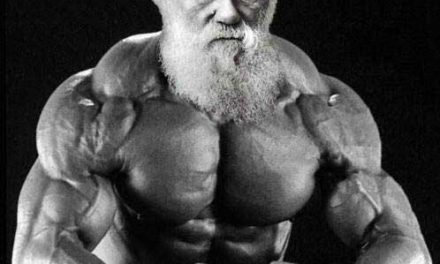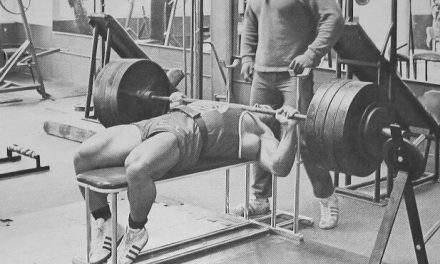by: Adam Sayih

Although nature is pretty cool, not talking about these plateaus.
A popular question I get asked often is “How can I get over a plateau.” Although a simple answer would be nice, our bodies are very complex and this question will require some deep digging to find the solution.
When trying to overcome a plateau, you need to do a full analysis on why you are at that plateau. There are probably a million variables we can discuss, but here’s the five I believe are the most common reasons for a plateau:
- Poor Rest and Recovery, and Nutrition
- Training intensity
- Sticking points
- Movement efficiency and form
- Mental
Poor Rest and Recovery, and Nutrition
This variable might seem pretty obvious, but you need to assess how much rest and recovery you’re actually getting. When I get asked about plateaus, this is the first variable I ask, and more often than less, sleep and recovery are poor.
You can’t train hard and expect strength adaptations with only three hours of sleep and long hours of labor.
If rest and recovery is a variable, dial down why you aren’t getting enough rest, and adjust your training volume if necessary. You should be focused on your rest and recovery just as hard as you train. My father drilled this in my head my whole life “the harder you train, the harder you rest.” Ask yourself, when is the last time you gave yourself a deload week? If you’re not deloading every 3-6 weeks (depending on the goal and intensity), don’t expect proper recovery and do expect a plateau.

The Supercompensation Model. An improvement in fitness will be made once fully recovered. If a training stimulus isn’t added while an improvement in fitness has peaked, a detraining period will occur until return to baseline. If a training stimulus is added too early before recovery, you will overtrain.
Now, nutrition. Sometimes we go through poor eating habits due to life demands: school, work became busy, family, etc. If your training is reaching a plateau, you need to assess your eating habits. If you ate pretty well and are now eating McDonald’s five times a week, don’t expect an increase in performance.
You also need to realize that if you are making gains in performance, strength, and hypertrophy, you need to increase the amount of food you consume. An increase in these variables mean you need to fuel these gains. For example, let’s say you weighed 150 pounds and started a weight gain program that required you to consume 3,500 calories a day. Now you weigh 170 pounds but gains have plateaued. You now need to eat even more as someone who weighs 170 pounds in order to continue gains. A 150 pound person and a 170 pound person aren’t going to eat the same amount. Remember, muscle is living metabolic tissue. More muscle equals higher resting metabolic rate, so you need to eat even more to stay at a surplus. Fuel those muscles!
Training Intensity
A big variable most people aren’t aware of is training intensity. Many plateaus are just a result of bad periodization and intensity.
When programming your lifts, the intensity should gradually increase on a weekly/bi-weekly/tri-weekly basis depending on your periodization. If you do three sets of five repetitions at 135 pounds every week for a month, you can’t expect a large strength adaptation to occur.
“Well I was making progress but can’t add any more weight.” This is completely natural. If we were able to add five pounds to our bench every week without any slowing in progress, the veterans of powerlifting would be benching literally thousands of weight by now. So what do we do? Adjust intensity.
It’s safe to say most beginners follow a protocol such as three sets of five to ten repetitions, once a week, for a main movement such as bench press. This will work for a while, a good while actually, but gains will eventually slow down. Does this mean you quit your gym membership and start P90x? No. Change up the intensity, and the easiest way to do so is by adjusting the volume.
The current training protocol for bench:
| Day | Sets | Repetitions | Weight | Total Volume |
|
National Bench Day (Monday) |
3 | 6 | 225lbs | 4,050lbs |
The adjusted training protocol to overcome a plateau:
| Day | Sets | Repetitions | Weight | Total Volume |
|
National Bench Day (Monday) |
4 | 8 | 205lbs | 6,560lbs |
Even though you did less weight, you increased total training volume by over two thousand pounds. More volume will create an adaptation since there is now more of a stimulus and overload.
Just to be clear, this is not the golden answer to fixing plateaus due to stale training intensity, it is just one example of how to play with training intensity and volume. How you adjust these two variables depends on the goal. For example, if you’re trying to increase strength, a common practice is to lower the repetitions and increase the weight (percentage of 1rm) on a week to week basis, deload, then start again.
Another method to play with intensity and volume is to add additional days to train a main movement. A speed day, high sets, low reps, low intensity, but focus on speed will really crush a plateau while increasing performance by training at different power outputs. This is the basic theory to the conjugate method pushed by Westside Barbell.
| Day | Lift | Sets | Repetitions | Weight |
| Monday | Squat | 5 | 5 | 315 |
| Tuesday | Bench (Speed) | 8 | 2 | 185 |
| Thursday | Squat (Speed) | 10 | 2 | 225 |
| Friday | Bench | 5 | 5 | 245 |
There is no such thing as muscle confusion. Contrary to popular belief, muscle don’t have a brain (therefore can’t be confused) and the only things muscles do are lengthen and shorten. They do, however, adapt to stress and how you adjust training intensity will allow adaptations to occur.
Sticking Points

Sticking points are referring to the point at which the weight “sticks” in a lift, as in doesn’t move, or slows. These sticking points are usually a sign of imbalance and weakness in specific areas. Some people make great progress but always get “stuck” at the same place every time. Instead of quitting the gym and starting hot yoga because you plateaued, address the point of weakness and tackle it.
The last powerlifting competition I competed in, I missed two of my last attempts, the bench, and back squat. If you don’t assess why you missed a lift, you will continue to fail in the same fashion. During the bench press I failed half way coming up, and the same for the squat. From there, I adjusted my training by adding exercises at appropriate intensities to blast through these sticking points.
How do you make this assessment? Well, you need to look at the biomechanics of the lift. Since I failed half-way coming up, I knew I was strong off the chest, but my triceps lacked the strength to lock the weight out, so I added board-presses, weighted dips, and reverse band benching and like magic, I can now easily lock out the weight I previously failed at.
My situation happened to be super ideal, however, not all situations turn out this well. A sticking point can be a myriad of issues such as: muscle weakness, mobility, speed, imbalance, and plenty of other variables.
Here’s a basic guide to resolving general sticking points:
| Sticking point: | Exercises to supplement: | Programming: |
| Top-half of bench press | Board-Press, weighted dips, reverse-band deadlift | 3-5 sets of 5-10 repetitions |
| Off the chest, bench press | Pin presses, negatives, bench press with pause on chest | 3-5 sets of 5-10 repetitions |
| Top-half of deadlift | Rack pulls, reverse-hypers, shrugs, glute-ham raises, rows, reverse-band deadlift | 3-5 sets of 5-10 repetitions |
| Off the floor, deadlift | Deficit deadlifts, squats with deadlift stance, glute-ham raises | 3-5 sets of 5-10 repetitions |
| Top-half of squat | Good mornings, reverse-hypers, reverse-band squat | 3-5 sets of 5-10 repetitions |
| Bottom of squat | Pause squats, 1 ¼ squats, glute-ham raises | 3-5 sets of 5-10 repetitions |
Movement Efficiency and Form
Although you might think you have flawless form (I’m looking at you, professional YouTube critique-er), you might have some inefficiencies holding you back. This is an easy variable to fix. Having poor form leads to imbalances and compensation of other muscles (not direct prime movers) to perform the lift. You might get away with this initially, but as weight increases, poor form will hold you back and even lead to injury. Ask a qualified trainer (keyword: qualified) or coach to check out your form or even send me a video and I’ll personally help you myself (email, twitter, facebook, whatever).
Mental

I specifically saved this variable for last. Sometimes you just really need to push yourself through a plateau mentally. You might have gone through all these variables and thought “I know this, I did that, I adjusted this already” and might leave this article rocking under your desk in a puddle of tears at the thought of never hitting that 500lb deadlift. Well here’s the truth, you don’t have the mental strength. Whatever your thought process is when you get under the bar, adjust it. I was stuck with the same deadlift numbers for nearly four months till I watched one of Clint Darden’s speed deadlift videos. His ferocious screams at the camera to have “balls and attitude” and engage in “war with the barbell” really made me kick it into gear and made me a much more aggressive lifter and pull with the strength that was already there, and the newfound will power to back it up.
If you’re not aggressive with your lifts and have a half-ass attitude, expect half-ass results.
Assess what needs to be done and tackle it head on. There might be just one variable you need to adjust, or all five that I mentioned might apply. Whatever it is, don’t be stuck at a plateau. Assess, apply, progress, and continue to move some heavy ass weight!
-Adam








